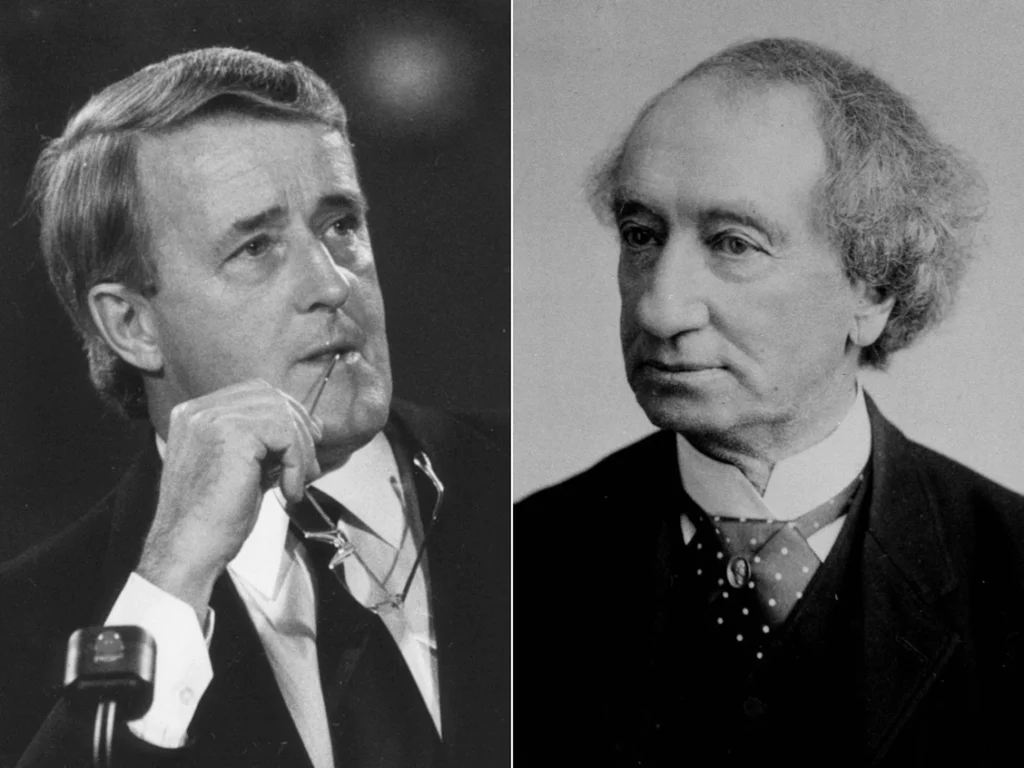Editor’s note: This article was originally published on the Canadians for a Sustainable Society website (sustainablesociety.com). It is republished here with permission of the author.
In an opinion piece post in the February 7th, 2024 issue of the Westerly News, Bruce W. Uzelman nailed the negative economic consequences of mass immigration and the resulting population surge. The population trap extends beyond just reduced economic productivity. The trap relies heavily on government services, our ecological services, and of course housing cost/availability. Call this the unholy triad. This tragedy is being inflicted upon us by governments and their influential donors. It’s time to stand up to the stealth policy makers and the unbelievable goal of 100 million Canadians promoted by the corporate funded Century Initiative.
Economy
The economic consequence of mass immigration in Canada is a drop in the standard of living due to productivity decline. Essentially, as populations grow the new employees must be equipped with the education, training, management, capital and tools to optimize the workers’ output. The OECD ranks Canada as a bottom dweller in terms of productivity and forecasts that we will stay there until 2050 at least. People that are struggling in our economy today should pay this special attention, because the status quo means an even more challenging future. Whereas balanced immigration gives us an opportunity of increased economic /ecological/affordable and pleasant standard of living, surging immigration does not.
The challenges posed by the federal mass immigration program, over a million temporary and non-temporary immigrants in each of the last two years (Stats Canada), are not just related to our economy. The sheer volume of this population growth has swamped our housing supply, health care services, court services, public transport, water/sewage services, biodiversity and on and on. The weak defense of this policy, quoted by elected officials, is that we are aging and there are labour shortages.
Universities, citizens, the economic class, our lower-tier governments and civil society need to call the higher-tier governments out and say reduce mass immigration numbers now. As outlined above, there is no sane rationale for such large numbers of newcomers. With a 6.3% unemployment rate in Canada, there is some capacity in our current unemployed pool to find workers. For instance offering incentives such as a livable wage and part-time employment for retired workers would help a tight labour market. According to The Economist of, January 27, 2024, an IMF study on regenerative AI showed that as many as 30 percent of white-collar workers could be laid off in the West due to the full implementation of AI. There is also evidence that when labour markets are tight that marginalized communities, who tend to have more unemployment, will get more and better work. This would provide an opportunity to redeploy or reemploy these people as they will be needed in sectors of the economy with tighter employment.
Medical Care
Imagine 160,000 immigrants coming to Toronto in 2021/2022 – that does not include foreign students or temporary workers (statista.com) Considering the average family medical practice services 1,215 people, that means those newcomers need 130 new doctors a year. This at a time when 20 percent of doctors in Toronto plan to stop practicing within 5 years (Unity Health Toronto). What is more incredible is that already 1.8 million Ontarians do not have a doctor. You can be sure PM Trudeau and Premier Ford do not want you to hear this. Our governments have been talking about bringing in more family doctors for years, a weak moral argument when we are poaching from countries that need those doctors too. Other tools must be employed to rectify this; we need to invest in Canadians.
Any remedy to increase numbers of doctors will take decades. First there are not enough residencies, (training opportunities) for doctors in a growing population. In fact, the number of residencies has increased by 167 in 10 years as our population surged by 5 million (CBC Analysis, January 2024). The solution, in the short term, is to allow more foreign-trained doctors in BUT not allow them to take up existing residencies – meaning that these foreign trained doctors must be beyond this requirement. As we allow in more foreign trained doctors for the short term, we have to increase residency positions for Canadians who have gone offshore to the Caribbean, Australia, Ireland and the UK to receive academic training in medicine. Currently these talented Canadians cannot get back into Canada because there are not enough residencies. Clearly we need to spend more money on residencies. As we did during two world wars, we can achieve national goals quickly.
As the number of residencies increase, we will have to allow more talented young Canadians into first year medical school. Currently there are only 2,800 first year spots in Canada (schoolfinder.com) while 13,500 talented people applied (PubMed, February 2021). Those that were turned away are excellent students and will make good doctors. It will cost money to build up the training capacity, but really there is no choice. And if the governments cannot solve this problem, then let private companies set up schools and a residency program that does not compete with public universities. This would result in a small boost for our economy and improve opportunities for Canadians in a medical career.
This same model can be applied to nurses, medical technicians, physiotherapists, and so on. It is cruel to subject Canadians to a severely inadequate medical system while the governments quietly watch mass immigration pump up speculator and bank profits.

Greenhouse Gas Trap
Another incoherent federal and provincial policy is the policy of curbing green house gases, while at the same time undertaking policies that increase demand for hydrocarbon based power. Living near the equator is less energy intensive per capita than living near the Arctic, according to onehourheatandair.com. As most new Canadians come from warmer places, with much lower energy demands, their new life requires increased energy. And the Trudeau Liberals compound this incoherent policy by buying pipelines (Narwhal 2016), approving new oil drilling sites (Reuters 2022) and allowing more oil exports than ever (CBC 2023). In fact, our GHG emissions have only declined 6.5 percent over the last 20 years against an international commitment to reduce them by 40 to 45% in 2030 (climateinstitute.ca). Clearly we will not meet that commitment.
As our Canadian governments misled and provided no global leadership on the GHG file, immigration keeps ramping up. Advocates such as cheap labour employers, mortgage agencies, immigration lawyers/consultants, post secondary institutions and developers keep banging the rapid growth model. Why? In two words, self interest – at the expense of Canadians.
Biodiversity Trap
As our population surges, expect biodiversity to drop as well, due to the increased need for raw materials such as wood, aggregate, steel and plastics. The Canadian Mortgage and Housing Corporation states that 5.6 million more homes (4 times the number of homes in the City of Toronto) are needed by 2032 to make up for the current shortfalls in housing and the growing population. Increased housing will not only sprawl into space next to communities but also place more demands on the hinterland to extract resources to build the homes and other consumer products that ultimately degrade and in some cases destroy these ecosystems. Our wild spaces will have to cope with an erratic climate and more people. Keeping wild spaces ensures that the ecological services they provide keep our planet livable and help maintain the physical and emotional health of our population. We cannot be so hypocritical as to oppose the cutting of the Amazon rain forests while destroying our own ecosystems.
Language Translation Trap
Mass immigration presents extreme challenges to governmental administrative processes. A good example is the provision of enough translators for legal documents. As stated by a McGill report: “according to the Translation Bureau of Canada, the demand for legal translation in Canada is steadily increasing, primarily due to a surge in immigration and refugee status applications.” That does not even touch on the need for translators in hospitals and courts and such. When a person comes to a hospital or a court in your community and there are no translators, front line service providers are at a loss. Our productivity and quality of life are not enhanced when we cannot communicate. Century Initiative advocates call for 100 million Canadians by 2100, and they lead us to believe our governments will get the management of this population surge right. They will not. As our economy sputters, this population surge will require more debt to be incurred as we seek to catch-up with social and physical infrastructure demands.
Human Aging
There is hope that we can meet the challenges and opportunities of an aging population, and with determination we can solve our medical personnel woes. Most every country in the world is facing an aging population or one that will be “older” in the next 20 to 30 years. Importing the brightest and best members of other countries into Canada seems to be amoral when we have not really given alternatives to a surging population any discussion.
For instance, attract students studying humanities in Canada, which often do not lead to a career, towards medical related careers. Currently, there are about 240,000 students studying humanities at post-secondary institutions in Canada. We could use incentives to help them complete training. Better to graduate with a job than just debt. Another strategy is to offer cash incentives to attract retired medical personal to return to part time work in medical institutions. Also, many older nursing homes can be retrofitted to allow for equipment upgrades to decrease the need for heavy lifting and increase reliance on mechanical transfers and bathing aids.
Outside of institutions, we can keep our elderly in their homes longer by offering adequate home care human supports as well as equipment and renovations that allow the elderly to live at home with a spouse or family. Currently the supports offered for aging home care are deteriorating and inadequate. The same strategy can be applied to younger people with disabilities.
Outside of the medical service sector, we can open up more training positions in STEM programs for Canadians instead of importing skilled workers from countries that need those skills back home.
It just seems the Liberals, Conservatives, and NDP want to promote the pro-immigration myth. Are they just lazy thinkers, or are they thinking about wealthy donors that sell homes and widgets? Are they afraid of slowing the immigration consultant industry, or are they afraid to discuss mass immigration out of fear of the perception of doing so? In any event, they may be selling you out. Time for a deeper conversation.
All content on this website is copyrighted, and cannot be republished or reproduced without permission.
Share this article!




The truth does not fear investigation.
You can help support Dominion Review!
Dominion Review is entirely funded by readers. I am proud to publish hard-hitting columns and in-depth journalism with no paywall, no government grants, and no deference to political correctness and prevailing orthodoxies. If you appreciate this publication and want to help it grow and provide novel and dissenting perspectives to more Canadians, consider subscribing on Patreon for $5/month.
- Riley Donovan, editor